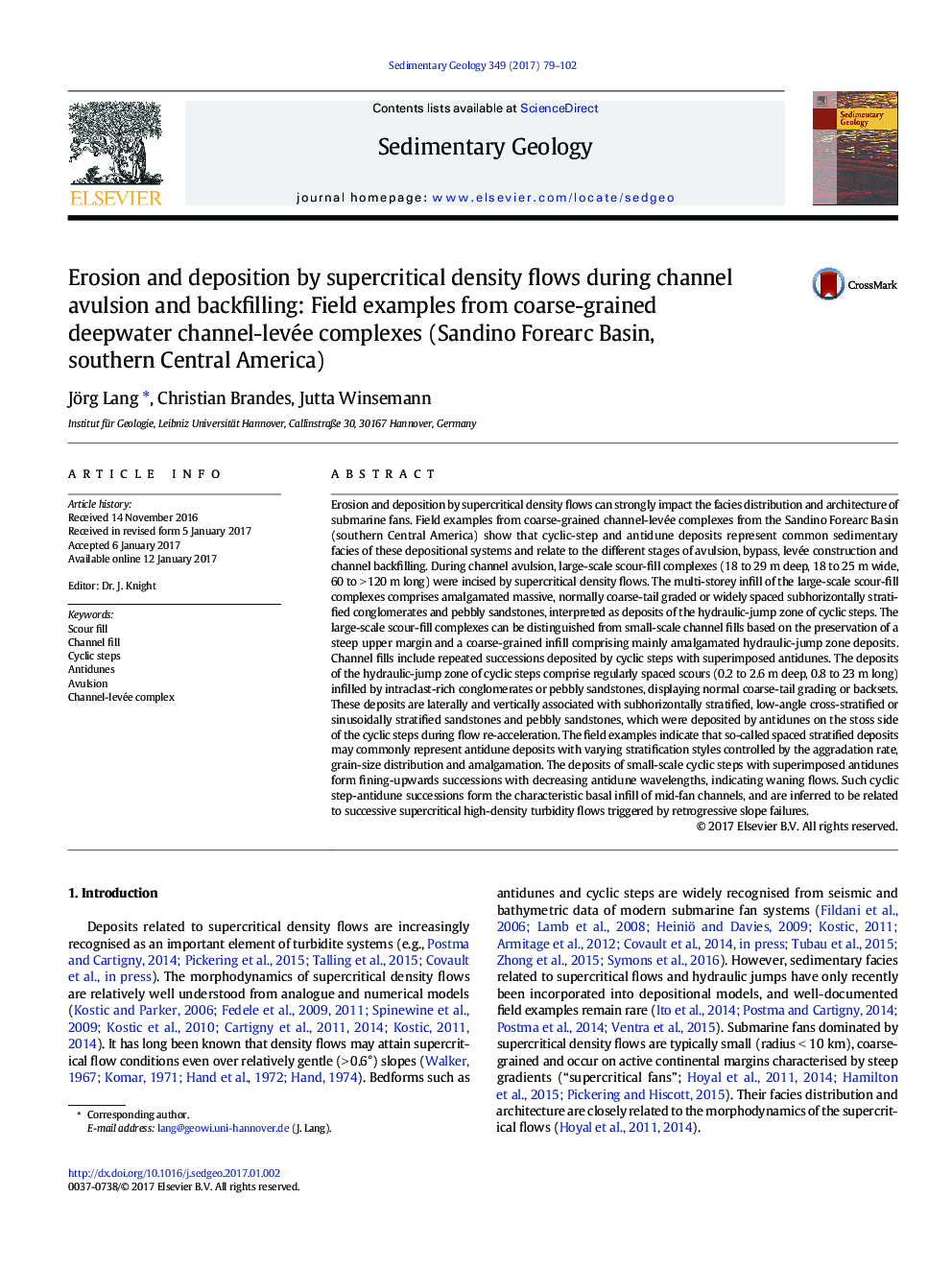| کد مقاله | کد نشریه | سال انتشار | مقاله انگلیسی | نسخه تمام متن |
|---|---|---|---|---|
| 5781420 | 1636014 | 2017 | 24 صفحه PDF | دانلود رایگان |
عنوان انگلیسی مقاله ISI
Erosion and deposition by supercritical density flows during channel avulsion and backfilling: Field examples from coarse-grained deepwater channel-levée complexes (Sandino Forearc Basin, southern Central America)
دانلود مقاله + سفارش ترجمه
دانلود مقاله ISI انگلیسی
رایگان برای ایرانیان
موضوعات مرتبط
مهندسی و علوم پایه
علوم زمین و سیارات
فرآیندهای سطح زمین
پیش نمایش صفحه اول مقاله

چکیده انگلیسی
Erosion and deposition by supercritical density flows can strongly impact the facies distribution and architecture of submarine fans. Field examples from coarse-grained channel-levée complexes from the Sandino Forearc Basin (southern Central America) show that cyclic-step and antidune deposits represent common sedimentary facies of these depositional systems and relate to the different stages of avulsion, bypass, levée construction and channel backfilling. During channel avulsion, large-scale scour-fill complexes (18 to 29Â m deep, 18 to 25Â m wide, 60 to >Â 120Â m long) were incised by supercritical density flows. The multi-storey infill of the large-scale scour-fill complexes comprises amalgamated massive, normally coarse-tail graded or widely spaced subhorizontally stratified conglomerates and pebbly sandstones, interpreted as deposits of the hydraulic-jump zone of cyclic steps. The large-scale scour-fill complexes can be distinguished from small-scale channel fills based on the preservation of a steep upper margin and a coarse-grained infill comprising mainly amalgamated hydraulic-jump zone deposits. Channel fills include repeated successions deposited by cyclic steps with superimposed antidunes. The deposits of the hydraulic-jump zone of cyclic steps comprise regularly spaced scours (0.2 to 2.6Â m deep, 0.8 to 23Â m long) infilled by intraclast-rich conglomerates or pebbly sandstones, displaying normal coarse-tail grading or backsets. These deposits are laterally and vertically associated with subhorizontally stratified, low-angle cross-stratified or sinusoidally stratified sandstones and pebbly sandstones, which were deposited by antidunes on the stoss side of the cyclic steps during flow re-acceleration. The field examples indicate that so-called spaced stratified deposits may commonly represent antidune deposits with varying stratification styles controlled by the aggradation rate, grain-size distribution and amalgamation. The deposits of small-scale cyclic steps with superimposed antidunes form fining-upwards successions with decreasing antidune wavelengths, indicating waning flows. Such cyclic step-antidune successions form the characteristic basal infill of mid-fan channels, and are inferred to be related to successive supercritical high-density turbidity flows triggered by retrogressive slope failures.
ناشر
Database: Elsevier - ScienceDirect (ساینس دایرکت)
Journal: Sedimentary Geology - Volume 349, 15 March 2017, Pages 79-102
Journal: Sedimentary Geology - Volume 349, 15 March 2017, Pages 79-102
نویسندگان
Jörg Lang, Christian Brandes, Jutta Winsemann,